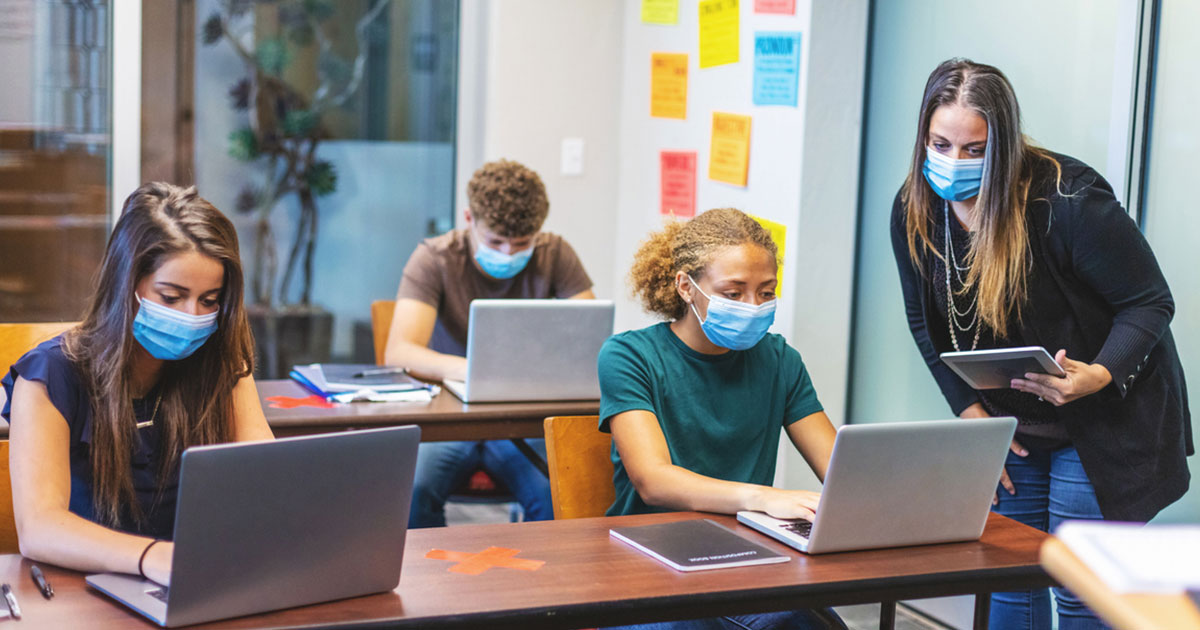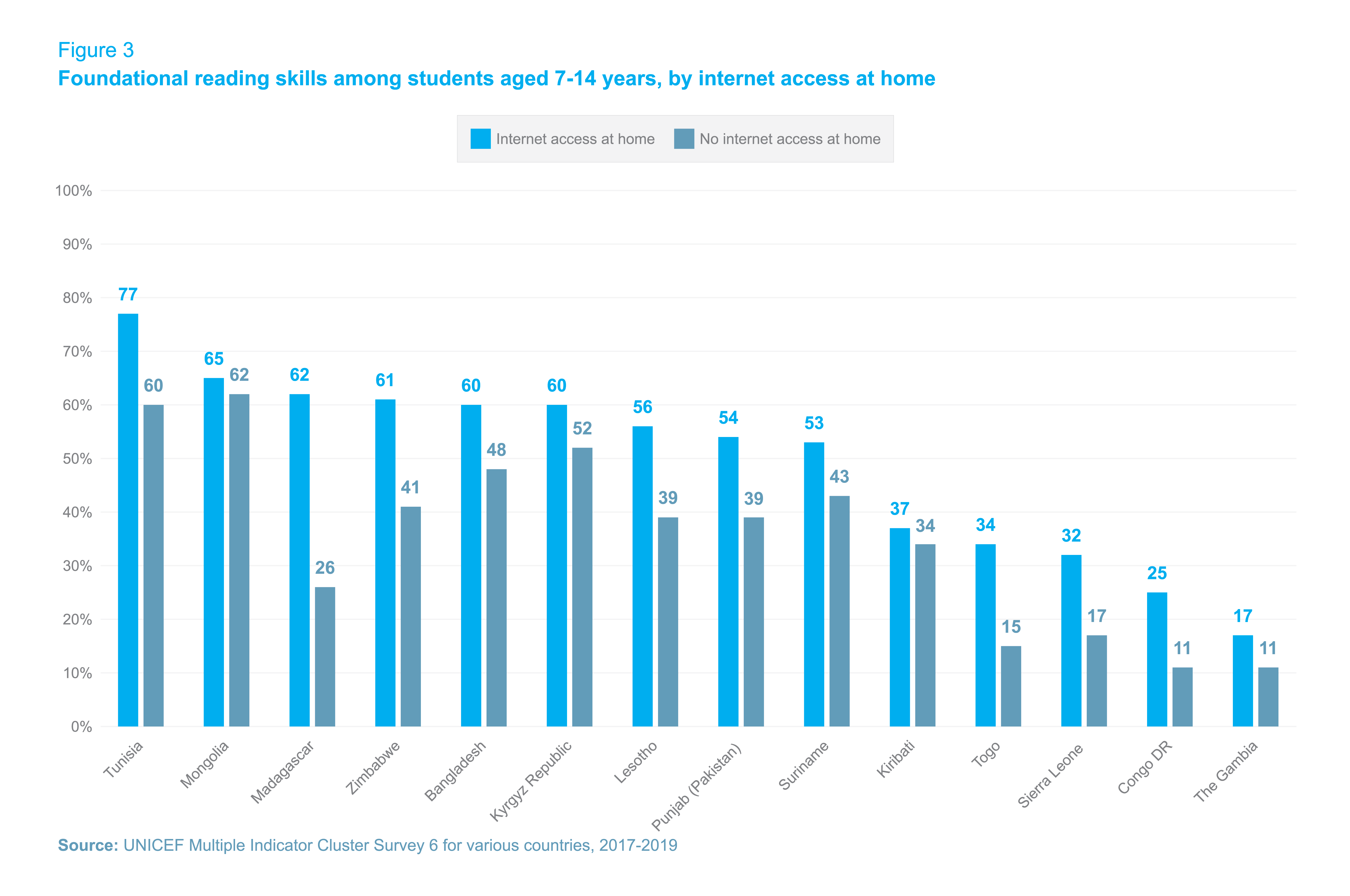Educational Resilience: Navigating Learning Amid the Pandemic

Adapting to Change: Education During the Pandemic
The global pandemic has reshaped the landscape of education, prompting a need for resilience, innovation, and adaptability. In this exploration, we delve into the challenges faced and the strategies employed in navigating education during these unprecedented times.
The Shift to Remote Learning: A New Educational Norm
The closure of schools and educational institutions prompted an abrupt shift to remote learning. Virtual classrooms, online lectures, and digital collaboration tools became the new norm. This transition required quick adaptation from educators, students, and parents alike, marking a significant evolution in educational methods.
Challenges of Remote Learning for Students
While remote learning offers flexibility, it comes with its set of challenges for students. Limited access to technology, the absence of a traditional classroom environment, and potential distractions at home pose hurdles to effective learning. Ensuring equitable access to education became a focal point during this shift.
Adapting Pedagogical Approaches for Virtual Settings
Educators had to rethink and adapt their pedagogical approaches to suit virtual settings. Strategies such as interactive online activities, virtual labs, and multimedia resources became essential in engaging students. The challenge was not only delivering content but also creating an interactive and participatory virtual learning experience.
Digital Inclusion: Bridging the Technology Gap
The pandemic emphasized the existing technology gap, making digital inclusion a critical consideration in education. Efforts were made to provide devices and internet access to students in need, ensuring that all learners have the tools required for effective participation in virtual classrooms.
Impact on Practical and Hands-On Learning
Certain disciplines heavily reliant on practical and hands-on learning faced unique challenges. Fields such as science, art, and vocational training required innovative solutions to replicate hands-on experiences in a virtual environment. Virtual simulations, at-home experiments, and creative projects became essential components of the adaptation process.
Supporting Educators: Professional Development in a Digital Era
Educators played a central role in the transition to remote learning. Professional development became crucial as teachers had to acquire new skills for effective online instruction. Training programs, workshops, and collaborative platforms facilitated the sharing of best practices and enhanced educators’ capabilities in a digital era.
Addressing the Emotional Well-being of Students
The upheaval caused by the pandemic impacted not only the academic but also the emotional well-being of students. The lack of social interactions, uncertainties about the future, and the challenges of virtual learning contributed to heightened stress and anxiety. Comprehensive support systems were necessary to address these concerns.
Parental Involvement: A Key Element in Educational Resilience
With students learning from home, parental involvement became more integral than ever. Parents took on roles as facilitators, providing technical support, creating conducive learning environments, and collaborating with educators. This partnership between parents and educational institutions played a crucial role in the success of remote learning.
Reimagining the Future of Education
The challenges of education during the pandemic spurred discussions about reimagining the future of education. Concepts such as blended learning, incorporating digital tools in traditional classrooms, and fostering a more inclusive and flexible educational system gained prominence. The pandemic became a catalyst for envisioning a more resilient and adaptive education landscape.
Education During Pandemic: A Catalyst for Innovation
As we navigate the complexities of education during the pandemic, the journey also unfolds as a catalyst for innovation. Stay informed about the evolving landscape of education at Education During Pandemic, and let us collectively shape an educational future that embraces resilience, adaptability, and inclusivity.
Adapting to Remote Learning Challenges During the Pandemic

Navigating Education in Unprecedented Times
The global pandemic disrupted various facets of our lives, and education was no exception. As schools and universities closed their physical doors, educators, students, and parents found themselves navigating uncharted territory. Remote learning emerged as a lifeline, offering a semblance of continuity in education during these challenging times.
Challenges and Opportunities in Remote Learning
While remote learning became a necessity, it also brought forth a unique set of challenges. Students faced difficulties adapting to virtual classrooms, dealing with technology issues, and missing the social interactions inherent in traditional education settings. However, it also presented opportunities for innovation, pushing educators to explore new teaching methodologies and leverage digital tools to enhance the learning experience.
The Role of Technology in Shaping Remote Education
Technology played a pivotal role in the transformation of education during the pandemic. Virtual classrooms, video conferencing platforms, and collaborative online tools became the new norm. This shift not only facilitated real-time interaction between teachers and students but also opened up possibilities for global collaboration. The integration of technology became a catalyst for reshaping the future of education.
Remote Learning’s Impact on Student Engagement
One of the notable aspects of remote learning was its impact on student engagement. With the flexibility of accessing lectures and resources from anywhere, students had the opportunity to tailor their learning experience to suit their individual preferences. However, maintaining consistent engagement and motivation proved to be a challenge that educators and students worked together to address.
Addressing Equity Issues in Remote Education
While remote learning offered flexibility, it also highlighted existing disparities in access to technology and the internet. Not all students had equal opportunities to participate fully in virtual classrooms. Schools and policymakers recognized the importance of addressing these equity issues to ensure that education remains accessible to all, regardless of socio-economic factors.
Remote Learning as a Catalyst for Lifelong Learning
The pandemic emphasized the need for continuous adaptation and learning in a rapidly changing world. Remote learning not only served as a short-term solution but also became a catalyst for promoting lifelong learning. The skills developed during this period, such as digital literacy and self-directed learning, are valuable in preparing individuals for the evolving demands of the future.
Teacher Innovation and Professional Development
Educators found themselves at the forefront of innovation during the pandemic. Adapting lesson plans for online delivery, exploring new teaching methodologies, and incorporating interactive elements into virtual classrooms became essential skills. Professional development opportunities and collaborative platforms allowed teachers to share insights and support one another in this transformative journey.
The Emotional and Social Impact on Students
Beyond academic challenges, the shift to remote learning also had emotional and social implications for students. The absence of in-person interactions with peers and teachers took a toll on the social development of students. Schools and educators recognized the importance of fostering emotional well-being and implemented strategies to address the social aspect of learning in virtual environments.
Preparing for the Future of Education
As the world gradually recovers from the pandemic, the lessons learned from the era of remote learning will shape the future of education. Schools and educational institutions are now better prepared to integrate technology seamlessly into their curricula. The experience gained during this challenging period will contribute to a more resilient and adaptable education system.
To explore more about the impact of remote learning during the pandemic on consumer health, visit Remote Learning Pandemic. As we reflect on this transformative period in education, it is evident that the challenges posed by the pandemic have accelerated positive changes, fostering a more innovative, inclusive, and technologically advanced approach to learning.
Adapting Global Education: Challenges and Innovations

Navigating International Education Amidst the Pandemic Challenges
The landscape of international education has undergone significant transformations in the face of the ongoing global pandemic. In this article, we explore the challenges and innovative strategies that have emerged as educators, students, and institutions adapt to the new normal.
Challenges in International Education
The pandemic has introduced unprecedented challenges for international education. This section delves into the hurdles faced by students, educators, and institutions, including travel restrictions, remote learning barriers, and the emotional toll of being away from home during these uncertain times.
Transition to Remote Learning: A Global Shift
One of the primary responses to the pandemic’s challenges has been the global shift to remote learning. This part of the article explores how educational institutions worldwide have adapted their teaching methods, incorporating online platforms and technology to ensure continuity in the learning process.
Impacts on Student Experiences and Well-being
The disruptions in international education extend beyond academics to impact students’ overall experiences and well-being. This section discusses the emotional and social aspects of student life, addressing issues of isolation, cultural adjustments, and the importance of mental health support.
Innovations in Virtual Classrooms
As traditional classrooms give way to virtual settings, innovative approaches to teaching have emerged. This part of the article explores the use of virtual classrooms, interactive online tools, and collaborative platforms that aim to enhance the learning experience in the absence of physical classrooms.
Challenges for International Students
International students face unique challenges, including visa uncertainties, financial strains, and the prospect of remote learning in a different time zone. This section sheds light on the specific difficulties encountered by international students and the efforts made to support them during these trying times.
Cultural Exchange in a Digital Era
The pandemic has prompted a shift in the dynamics of cultural exchange among international students. This part of the article discusses how virtual platforms and online interactions have become essential tools for fostering cross-cultural connections in the absence of traditional in-person exchanges.
Technological Advancements in Education
While the pandemic has posed challenges, it has also accelerated technological advancements in education. This section explores how educational technology has evolved to meet the demands of remote learning, from virtual laboratories to AI-driven personalized learning experiences.
International Collaboration for Educational Resilience
Amidst the challenges, international collaboration has become a cornerstone for educational resilience. This part of the article highlights collaborative efforts between institutions, governments, and global organizations to address the shared challenges and create a more resilient international education ecosystem.
TheHealthyConsumer.com: A Resource for International Education Insights
For comprehensive insights into navigating international education amidst the pandemic, visit TheHealthyConsumer.com. The website provides articles, tips, and resources dedicated to understanding and adapting to the challenges of international education in the current global scenario.
Looking Forward: Adapting and Innovating for the Future
In conclusion, navigating international education amidst the pandemic requires ongoing adaptation and innovation. This final section reflects on the resilience shown by students, educators, and institutions and emphasizes the importance of staying informed and proactive in shaping the future of global education.
In summary, the challenges faced by international education amidst the pandemic are met with resilience, innovation, and collaborative efforts. TheHealthyConsumer.com serves as a valuable resource for those seeking guidance on understanding and navigating the complexities of international education in these unprecedented times.





